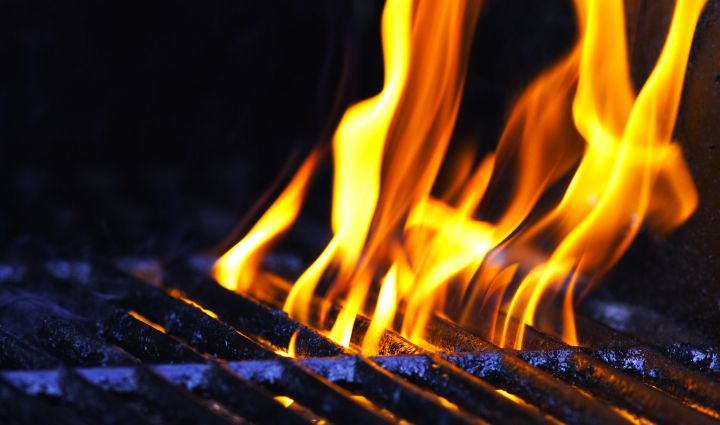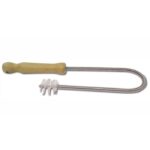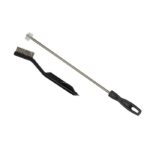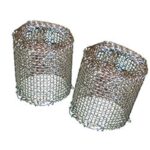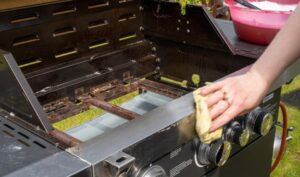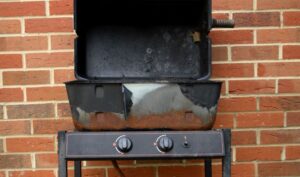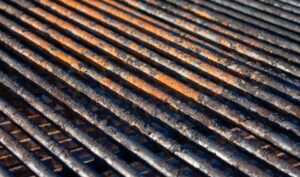The Complete Guide to Troubleshooting Gas Grill Issues is your source for step-by-step instructions on how to diagnose and fix the most common gas grill issues. Whether your grill isn’t heating properly, won’t stay lit, or simply has rusty parts, we’ve got the answers you need to get your gas barbecue firing on all cylinders.
Firing up your grill only to discover yellow or orange flames is a clear indicator that your grill isn’t getting up to the right temperature and something is wrong.
A properly functioning grill will get hot enough to produce solely blue or predominantly blue flames with yellow tips. If your grill is producing a yellow or orange flame, it is likely for one of two reasons:
- Low gas pressure from the regulator.
- Your grill is not generating the correct ratio of gas to oxygen to produce clean combustion.
There are a few different things that could cause either of these problems, usually relating to your grill’s regulator or burners. In this section of the Complete Guide to Troubleshooting Gas Grill Issues, we’ll help you figure out why your gas grill has a yellow or orange flame and how to fix it. Keep reading to learn more about four common fixes:
- Checking the regulator
- Cleaning the burners
- Adjusting the burner intake
- Realigning the burners
Let’s get cooking.
4 Ways To Fix Your Gas Grill’s Yellow Flame
1. Check the regulator
Gas grills come with a safety feature called an Overfill Prevention Device (OPD), also known as a Flow Limiting Device (FLD). Accidentally triggering your gas grill’s OPD or having a malfunctioning regulator can impact the flow of gas and produce yellow or orange flames. If you have yellow flames, start by resetting the OPD, and if that doesn’t work, it might be time to replace the regulator.
How to reset your OPD
If the OPD detects an overfill of gas (i.e., a gas leak), it will go into bypass mode and immediately reduce the amount of gas passing into your grill.
There are a few things that can trigger bypass mode accidentally, resulting in a low flow of gas and yellow or orange flames:
- Opening the tank valve too quickly.
- Turning the burners on before opening the propane tank.
- Turning the propane off before turning off the knobs.
- Leaving the control knobs turned on after grilling.
You can quickly reset your OPD and restore normal flow by following these steps:
- Open the grill lid.
- Turn off the gas at the propane tank.
- Disconnect the hose and regulator from the tank.
- Turn all the control knobs up to high, including your side burner if you have one.
- Wait for one full minute, then turn all the control knobs off.
- Reconnect the regulator to the propane tank and slowly turn the gas on at the tank.
- Light your grill.
Replacing your regulator
If the problem isn’t the OPD, it could be a malfunctioning regulator. If all of your grill’s flames are yellow and low. you should inspect your regulator for cracks and other damage. If you notice that it is damaged, it should be replaced. Thankfully, replacing a regulator is actually fairly straightforward:
- Pick up a new regulator that fits your gas grill.
- Ensure that you have the gas turned off.
- Remove the existing regulator—most simply twist off, but consult your manual if you aren’t sure or are having difficulty.
Install the new regulator. - Check for leaks using soapy water.
If this doesn’t resolve your gas grill yellow flame issues, it’s time to take a look at the burners, starting with a good cleaning.
2. Clean the burners
Debris inside the burners (often spider webs) or burnt-on grease or food on the outside of the burner can block the ports (the holes running along the side of the burner). This blockage forces the gas out of the unblocked holes, causing an excess of pressure that leads to a yellow flame.
GRILL SPOT TIP: If you have been a little lax with cleaning your grill, it may be a good time to give your entire grill a deep clean.
Turn off and disconnect the gas before carefully removing the burners. Examine the burner tubes to make sure they are not damaged or rusted. If they are, you will need to replace them. Otherwise, inspect them for blockages and clean them:
- Use a bottle brush or special venturi brush to clean out the venturi tube of each burner.
- Use a wire brush or other needle-like object to remove any deposits from each clogged port and restore normal gas flow.
- Consider using spider exclusion screens to protect against future spider web-related obstructions.
Place them back in the grill and reconnect your gas line. Fire up your grill to see if your flames have changed colour.
3. Realign the burners
A misaligned burner can also result in yellow or orange flames. After cleaning your burners and putting them back in place, check they’re properly aligned:
- Turn on your grill to low.
- Examine the gas flow through all the burners, as well as the control valve and manifold. It should follow a straight line, with no flames escaping out where it shouldn’t.
- If anything looks out of place, carefully realign it after the grill has cooled.
4. Adjust the burner intake
While cleaning and realigning your burners, you should also check if the intake needs adjusting. A yellow flame can be caused by a bad mixture of gas and air, which is easily fixed by adjusting the burner air intake:
- Locate the venturi tube adjustment screw you’ll use to release the shutters or adjustment sleeve in step 3. If you need help finding it, consult your manual.
- Light the grill and set it on low.
- Loosen the screw and open the shutters till the flame is mostly blue.
- Repeat for other burners as needed.
- Turn off the gas and tighten the adjustment screw.
- Let your grill cool.
Conclusion
If your gas grill is producing yellow or orange flames, it can really slow down the cooking process. Thankfully, there are several easy fixes you can try:
- Check the regulator
- Clean the burners
- Realign the burners
- Adjust the burner intake
Learn more about different grill problems, what causes them, and how to solve them in our Complete Guide to Troubleshooting Gas Grill Issues:

